10 October 2025
From my window, the modern port city of Hiroshima stretches before me. A landscape of high-rises, tree tops, and wind streets framed by green mountains to the north and the wide expanse of Hiroshima Bay to the south. It saddens me that for most of the world, Hiroshima is remembered only as the first city to suffer the devastation of an atomic bomb. Or, perhaps, this symbolizes its true purpose.
Hiroshima Atomic-Bomb Hypocenter Monument
Just after sunrise, I walk to the unpretentious corner marking the site of the first atomic blast in the history of civilization. Streets are quiet and sky is blue. I hear birds chirping and the occasional bicyclist. Looking up, one would never know what was falling.
This Hiroshima Atomic-Bomb Hypocenter Monument marks the exact spot on the ground directly beneath the explosion of the atomic bomb on August 6, 1945, at 8:15 a.m. The bomb detonated about 2,000 feet above the city, and this point on the surface is referred to as the hypocenter (sometimes called ground zero).
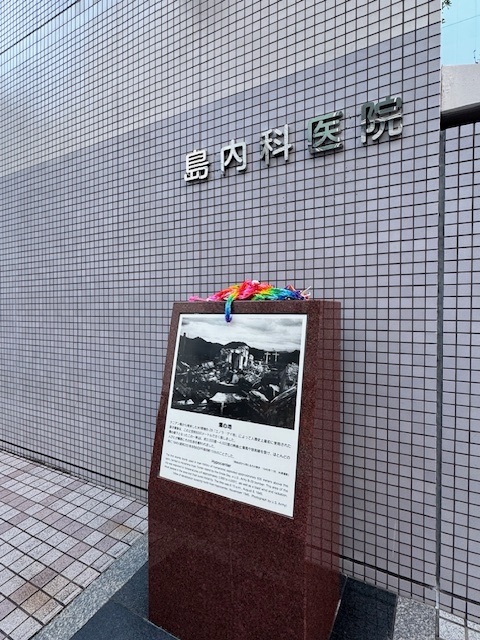
The monument is a simple stone marker located on the street behind Shima Hospital, less than feet from the actual target of the t-shaped Aioi Bridge.
At the time of the bombing, this area was part of Hiroshima’s bustling commercial district, and almost everything within a mile radius was instantly destroyed.
The only things left standing were banks and life insurance buildings. Tens of thousands of people perished within seconds.
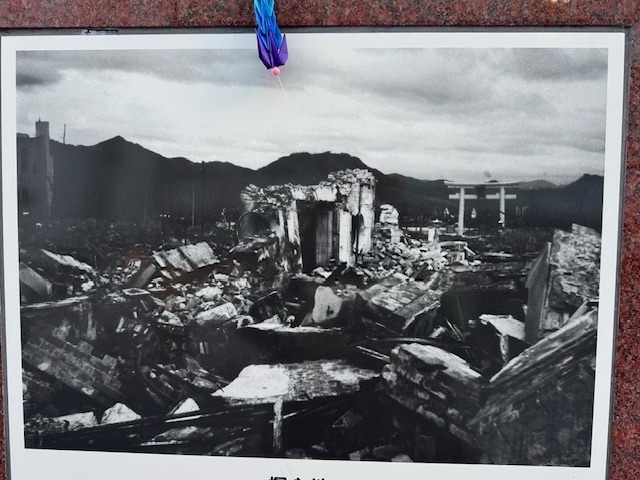
Unlike the larger memorials in Peace Park, the Hypocenter Monument is modest and quiet, but it holds deep significance. Standing there gives one a sobering sense of proximity to the event, marking the very point where modern history changed forever.
Around the Corner
Only 300 short steps away is one of the most dramatic and recognizable scenes of Hiroshima: the Atomic Dome. All is quiet as it sits like a sentinel over humanity reminding us of what war can reap.
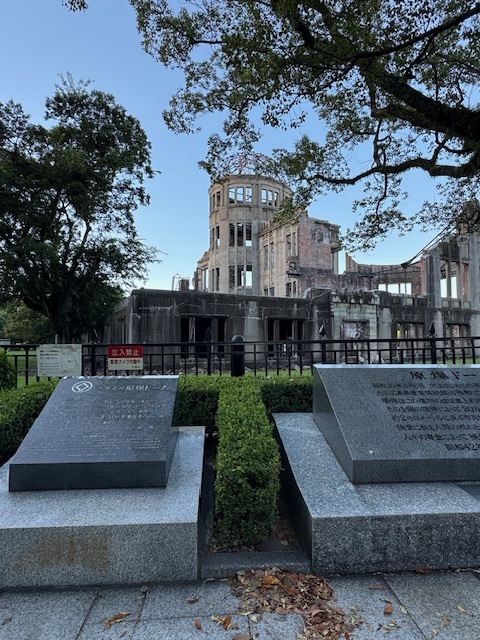
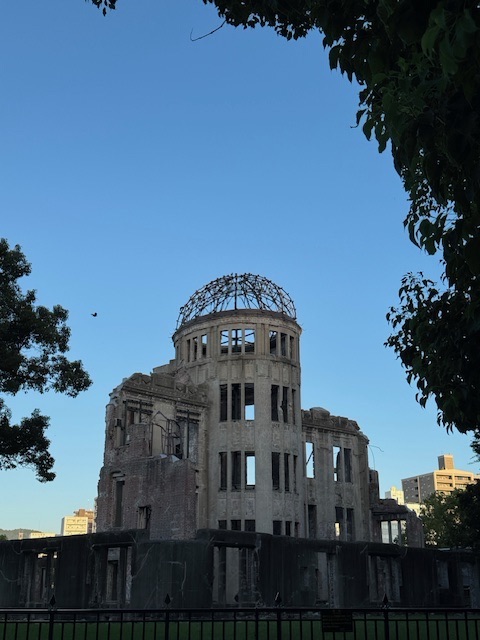
I walk around the dome and read its history. Meant to be an exhibition hall overlooking the river and t-bridge, it now acts as an exhibition forever. This is what war heaps upon the warriors and innocent alike.
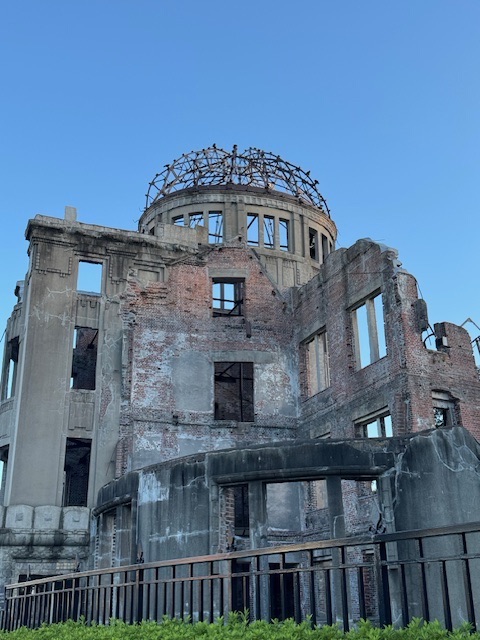
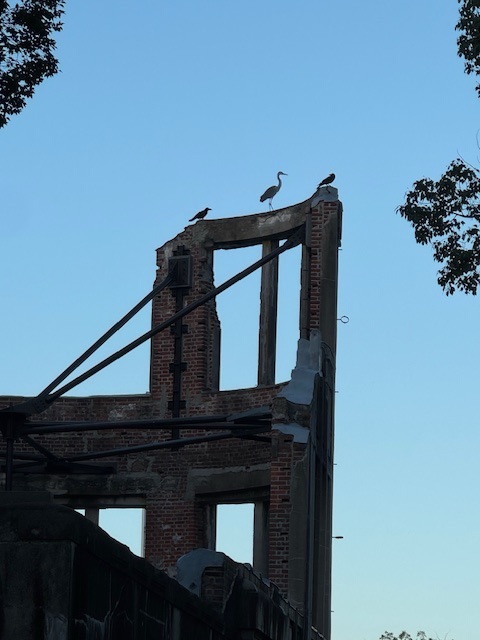
Peace Memorial Park
Later in the morning, our group walks across the street and enters Peace Memorial Park. The park stands on what was once the city’s busiest downtown district, which was completely destroyed by the atomic bomb. The large park is dedicated to the remembrance of the victims of the bomb, and to promote peace and nuclear disarmament. Within the park are many important memorials and monuments.
- Gates of Peace were created by French designers Clara Halter and Jean-Michel Wilmotte and installed in 2005. The ten tall glass gates are inscribed with the word “peace” in 49 languages.
- Memorial Cenotaph for the A-bomb Victims sits in a long reflector pond and shaped like a saddle to shelter the spirits of the dead. Herein lies a stone chest. Inside is a list of the names of all known victims. From here, I look through the arch and see the Peace Flame and the Atomic Bomb Dome aligned in a single view.
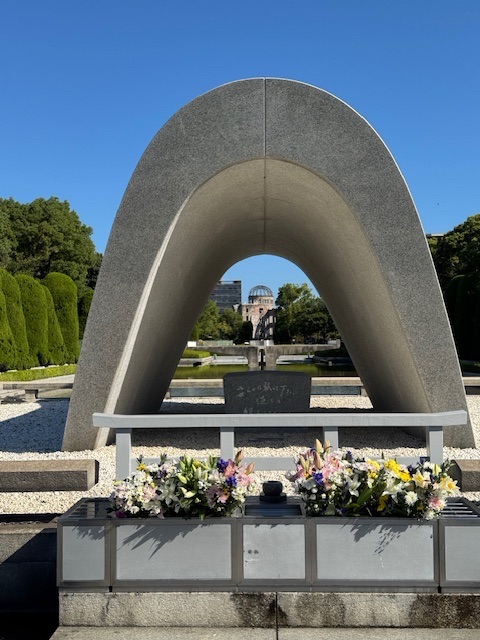
- Peace Flame, first lit in 1964, will remain burning until all nuclear weapons are abolished. The flame reflects at the opposite end of the same pond as the Cenotaph.
- A-bombed Phoenix Trees are groomed to perfection. Scattered throughout the park, these phoenix trees (Chinese parasol trees) represent survivors of the atomic blast. Though scorched and badly damaged, they sprouted new leaves soon after the bombing. Today they are a living symbol of resilience, rebirth, and hope, embodying Hiroshima’s recovery and message to the world.
- Statues appear everywhere. Each has a story. Prayer Fountain, the statue of Mother and Baby in the Storm, and Kannon Statue are but a few.
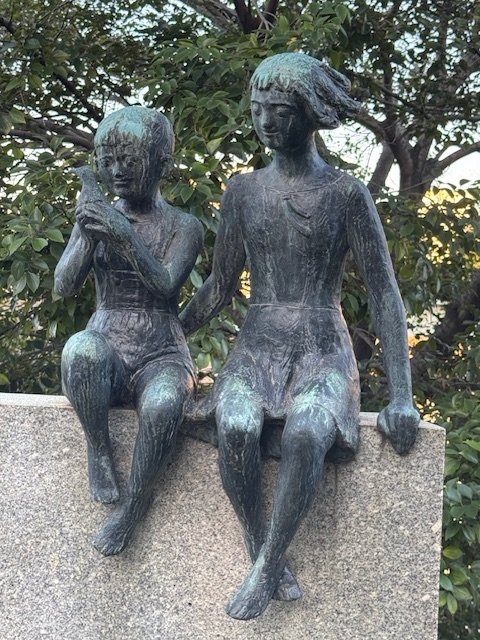
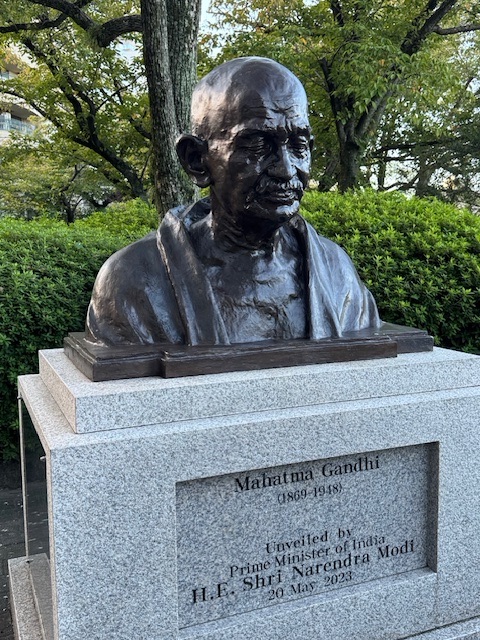
- Peace Memorial Museum sits to my right. It offers an in-depth look at Hiroshima’s history, the events of August 6, 1945, and the city’s recovery. Artifacts, photographs, and survivor testimonies provide a sobering perspective.
- Children’s Peace Monument was inspired by Sadako Sasaki. She was two years old when the bomb dropped. She died in 1955 from radiation-related leukemia at the age of 12. Japanese folklore says that a crane can live for a thousand years, and a person who folds an origami crane will have their wish granted. Sadako folded 1,300 origami cranes before her death in 1955. Surrounding the statue are glass cases filled with thousands of folded paper cranes sent from around the world. School children, bright yellow caps, await their turn to sig at the memorial and add their cranes.
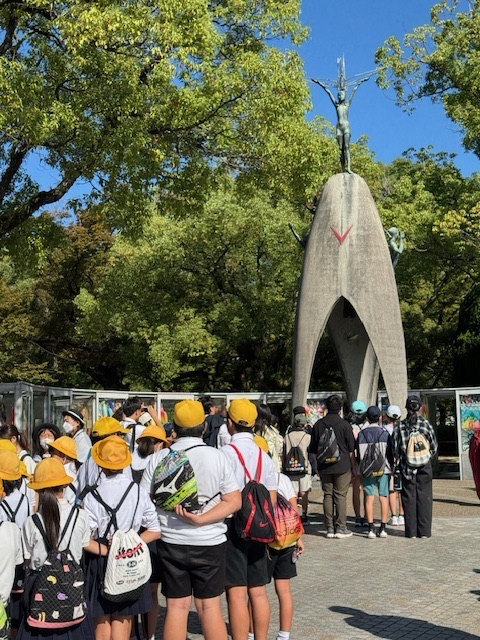
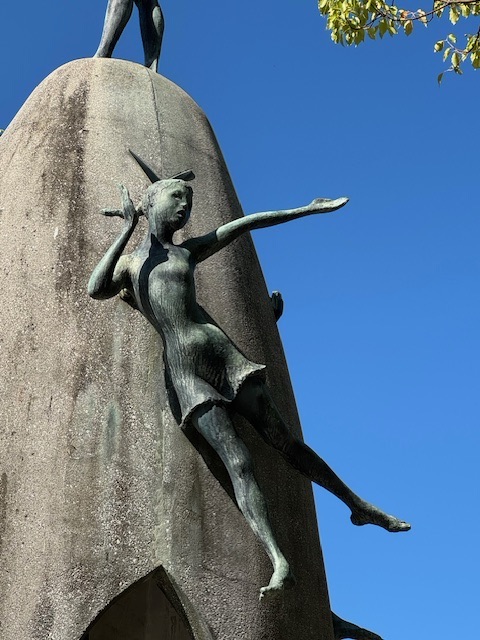
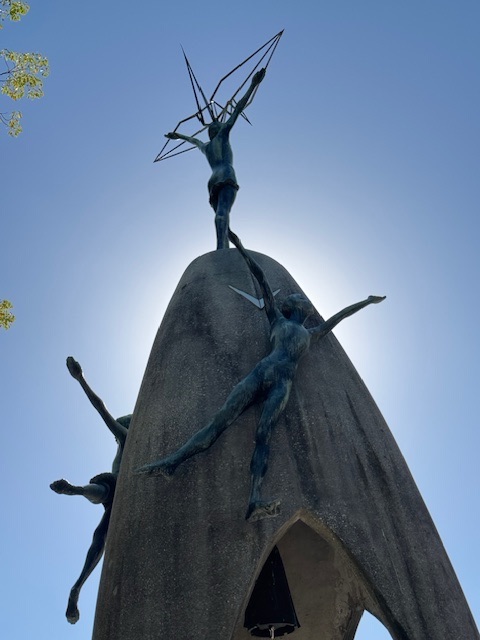
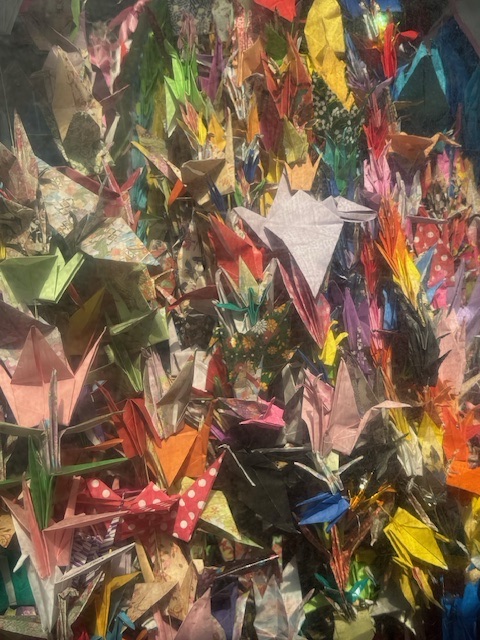
- Bell of Peace encourages visitors to ring it. Its resonant sound is meant to echo the universal wish for harmony and a nuclear-free world.
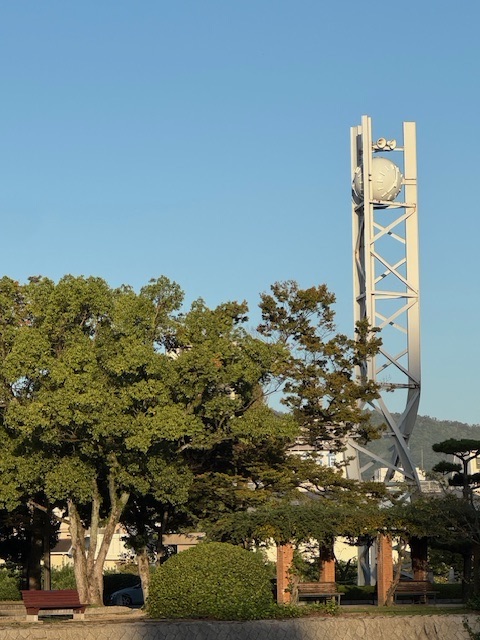
Peace Clock Tower, a slender triangular structure, chimes every day at 8:15 a.m.—the exact time the bomb was dropped. It serves as a daily reminder of peace and remembrance.
- Atomic Bomb Dome sits across the Motoyasu River to my right. The preserved skeletal remains has been left exactly as it stood after the explosion. This UNESCO World Heritage Site is the most iconic symbol of both destruction and resilience.
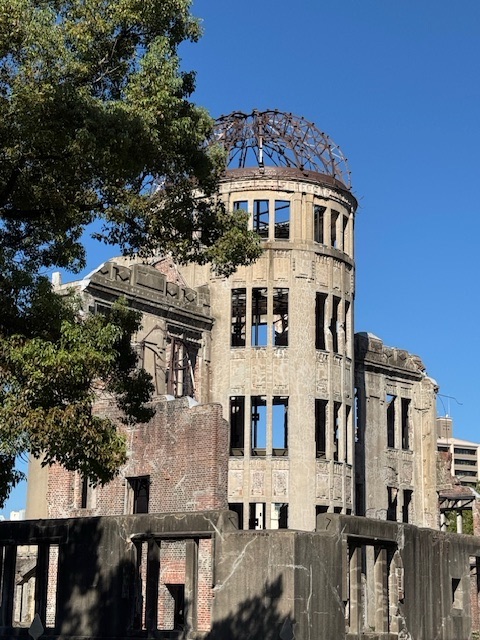
Experiencing an unforgettable event in history
The Peace Memorial and Museum provides context to the impact of the bombing on the city, the country, and the world. Allow at least an hour for the museum. The Park is relatively small and can be walked in less than an hour. Contemplation about its meaning and importance will take a lot longer.
明日は明日の風が吹く (Ashita wa ashita no kaze ga fuku).
“Tomorrow, tomorrow’s wind will blow”.
Japanese proverb conveying a hopeful attitude toward the future.
0 Comments